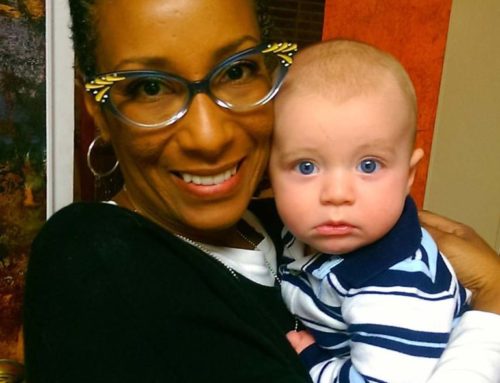When I first began Integral and Enneagram classes, my aim was to teach. Teaching itself is by definition a transmission of knowledge. Both the Enneagram and Integral help flex the muscle of “perspective taking” where we learn to observe the nuances of our own perspective along with the perspectives of others.
While teaching new material is invaluable, it is often the skill of facilitation that has elicits the deeper shifts that that crack us open to a more expanded perspective.. Facilitation means to “grow or bring about.” Both have their proper place although each requires a unique skillset.
Teaching requires we be constant students, as being a teacher presupposes a certain level of expertise in a field of inquiry and when we hold the position of student, we are open to learn. Transmission of information which engenders new awareness invites a deepening of the capacity to consider other perspectives. Education empowers.
Yet the more I teach the Enneagram, I’ve realized it is the encounters in which I facilitate self-reflection, personal inquiry, dyads and small group discussions which elicit “ahas” from class participants. Facilitating people and supporting them in developing the capacity to pause, listen and observe their own patterns while reflecting on another’s perspective can be powerful.
As they learn their biases, it reduces the tendency to collapse into the limited worldview when in conversation or conflict. In this space, they can truly exercise the muscle of perspective taking.
When we teach, we can assume a position of primacy; there can be a tendency to stay emotionally safer as a sort of distance is built into the whole set up as we impart unfamiliar information. We may not have to engage as deeply nor make ourselves as vulnerable or risk as much potential for conflict.
Yet, when we facilitate, we are plunged into a place of vulnerability and unknowing. Something springs from the field of the group that challenges our assumptions. In this space of facilitating another’s experience, we hold the tension in the room and allow it to move us toward deeper insight. We create not only an environment not only where others feel safe to share, but also a context to challenge familiar perspectives. We honor the diversity of perspectives in the room while encouraging students to find common threads that are emerging.
In facilitating an Enneagram class, it’s helpful to know the preferred mode of communicating with each type while also leaving space for unique expression which is rooted in a myriad of other factors. I like to pay attention to my type biases as I’ve noticed that depending on where I am in my life, certain patterns can trigger me more easily than others.
A competent facilitator can also develop the capacity to spot projections and assumptions. Occasionally, students “step on their shadow” and project it onto another person or onto the facilitator. The facilitator can invite students to PAUSE, notice patterns and projections and open to the possibility of another way of seeing.
Facilitation requires careful attention to the multiple perspectives floating around a room. It invite us into our own inner landscape in which we reflect on our own reactivity and psycho-spiritual interiors.
Placing ourselves in the vulnerable position of teacher/facilitator elicits awareness of our blindspots, our core competencies and the very structures we use to create meaning. We can deepen our capacity to adopt an unbiased neutral stance so students can drop into themselves more deeply.
Parker Palmer, author of “The Courage to Teach” tells of a student who describes her teachers. She says that good teachers are so different from one another but bad teachers share a similar trait: “Their words float somewhere in front of their faces, like the balloon speech in cartoons.” Can you feel the image?
Good teachers/facilitators, Palmer says, “join self, subject, and students in the fabric of life because they teach from an integral and undivided self; they manifest in their own lives, and evoke in their students, a ‘capacity for connectedness.’ They are able to weave a complex web of connections between themselves, their subjects, and their students, so that students can learn to weave a world for themselves.”
They also can establish a heart connection in which they cultivate in themselves an open heart to self and other by generating a field of compassion through simple breathing in and out, giving and receiving. The student is no longer “other” who is “out there.” Rather, each student feel safe enough to bring their “unique singularity into the room.
Finally, the value of a regular practice of meditation and/or contemplation is helpful because practice helps us flex the muscle of self observation and the observation of patterns. For me personally, practice keeps me grounded and far more likely hold an unbiased neutral stance. I have a greater tendency to get out of the way as I’m an assertive type on the Enneagram and I can “take up too much space” in the room if I’m no paying close attention. I’ve found it helpful to observe my own somatic and subtle energy sensations as they may offer clues to what is happening in the field.
A regular practice also cultivates the spacious mind that can recognize default mental models rooted in our character structure.
A practice also anchors the notion of radical interconnectedness in which we see begin to see ourselves as an organic, ever-changing part of a greater whole. If the teacher is collapsed into her own egoic assumptions, projections, unmet needs to protect, impress or defend, the group will sense separation and will begin to put up familiar walls.
We need not separate teaching and facilitation into two static entities. We can place these skillsets within the three life forces,: active, receptive and reconciling. Teaching objective knowledge may be the active force, eliciting individual and collective interiors may be the receptive force, and the weaving of the two can be the reconciling force.
This careful weaving requires the kind of presencing which as Otto Scharmer describes is “a third kind of seeing, beyond external reality and beyond even seeing from the living whole.” It is seeing from within the source from which the future is emerging, peering back at the present from the future. It is trusting the temple of our unfamiliar.
For heart types, the greatest resistance to trusting the unknown is a fear of disconnection from others; they often live in the illusion that they are sole bearers of responsibility for creating life giving relationships and meaningful communities.
Body types may fear a loss of control; they may think they may lose power if they trust the liminal space of unrevealed territory full of unknowns and potential landmines.
For head types, certainty and security reign supreme so the unknown can feel like a walk on a obscure and uncertain path with no familiar markers to warn of bumps and ruts and slippery slopes.
Yet, relaxing into the fear and surrendering to the unknown in a practice of skillful teaching and facilitation has the potential to create not only meaningful connections, but also individuals and communities who are willing to step into their own power, discover their own patterns and limited perspectives and respond to the present moment with greater awareness.
Facilitation also helps cultivate one of the most important qualities you can develop: the ability to trust yourself and the unique capacities you bring to your teaching.







